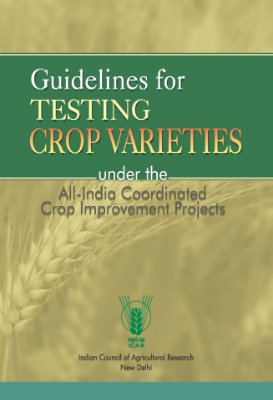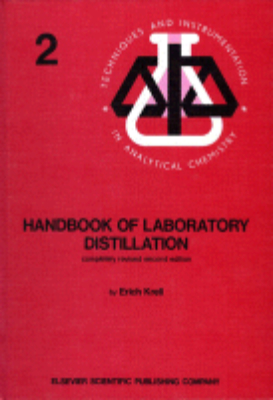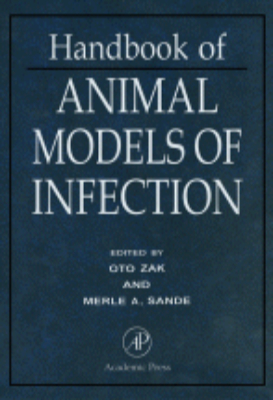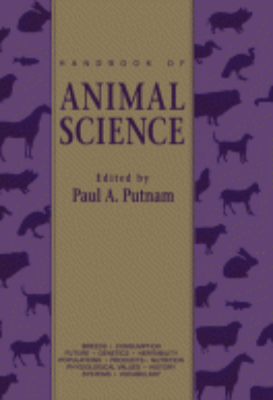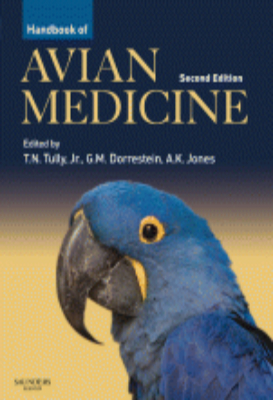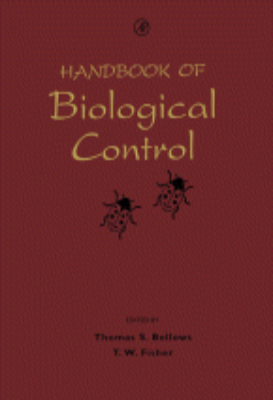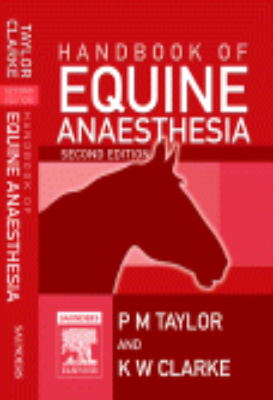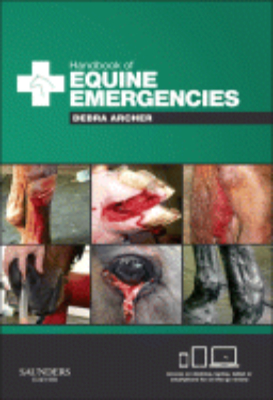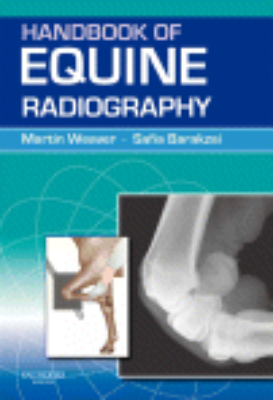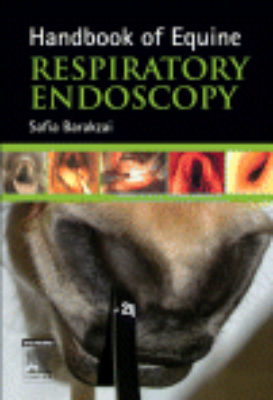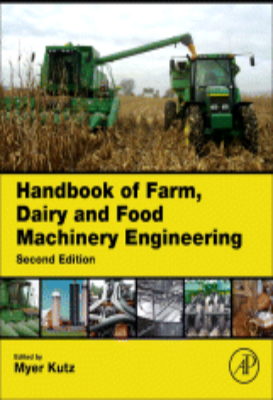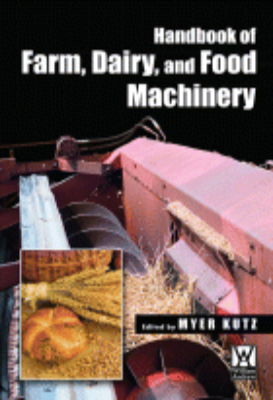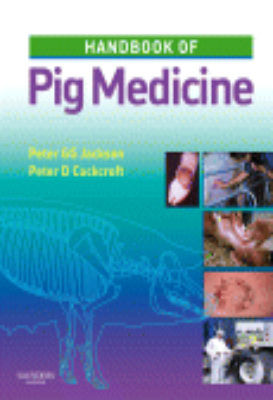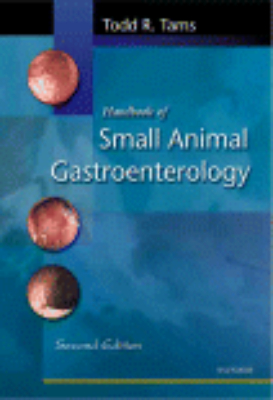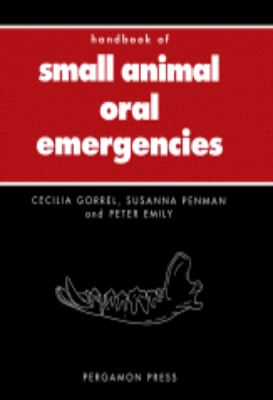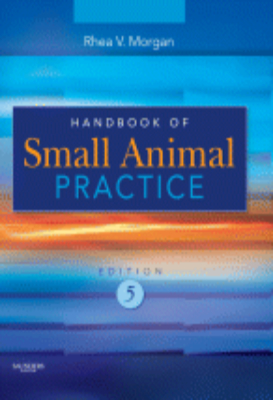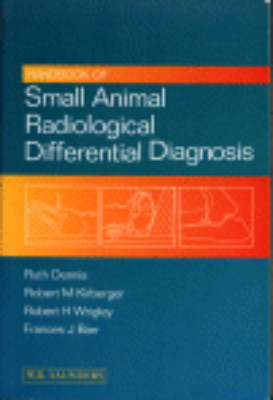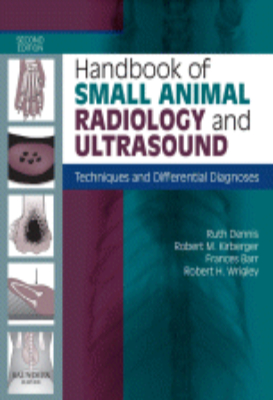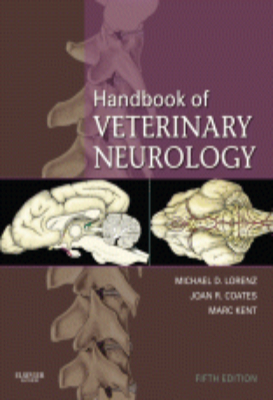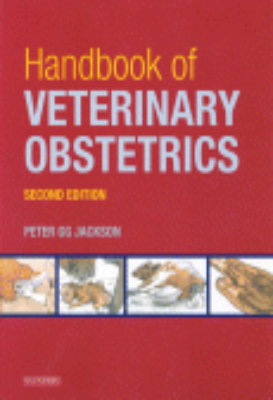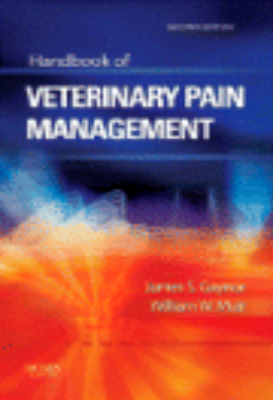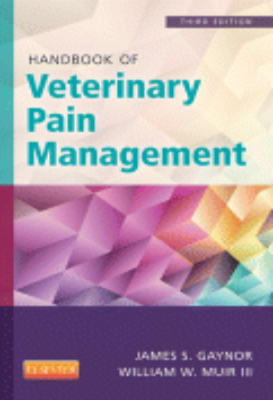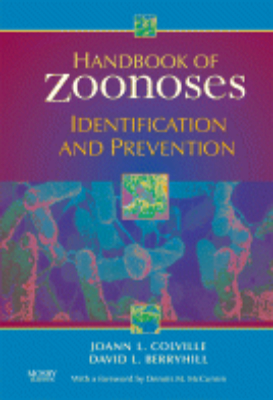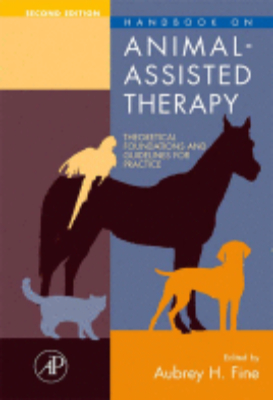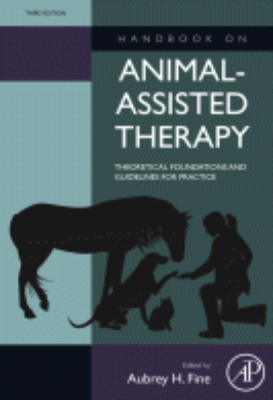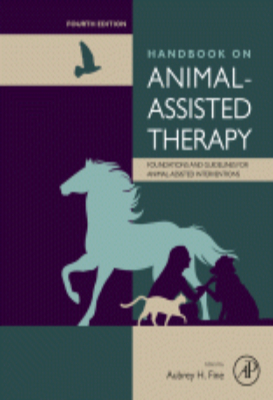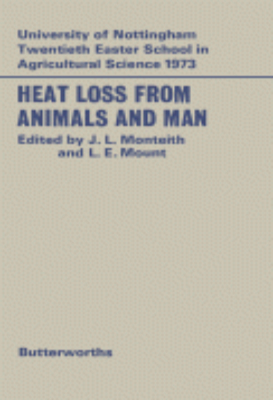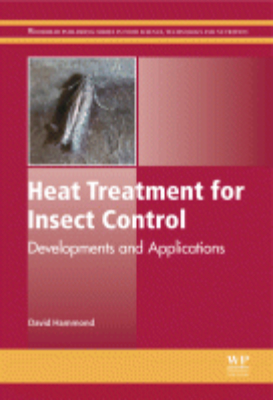ebooks
Handbook of Animal Models of Infection
"Handbook of Animal Models of Infection is a complete revision of a three-volume text that was published in 1986. It incorporates the major advances in the field during the past decade, in particular those concerning molecular biological procedures and new models that have been developed. It focuses on both methods and techniques, which makes it an essential and comprehensive reference as well as a benchtop manual. The Handbook will help investigators save time and effort in formulating an approach to test a new potential therapeutic agent or combination of agents for in vivo efficacy and to position the therapy for specific infections where it may have therapeutic promise. The book is divided into five sections; the first covering the general methodologies, followed by sections describing experimental bacterial, mycotic, parasitic, and viral infections. Key Features. Discusses ethical and safety aspects in an introductory background section. Covers principles of animal care and current techniques appropriate for the use of animal models of infection. Details a wide range of animals including rodents, rabbits, cats, and primates. Provides hands-on descriptions of how to set up the model. Discusses the major advantages and limitations of each model. Ensures full coverage of bacterial, fungal, viral, and parasitic infections"
Handbook of Animal Science
This comprehensive handbook provides information on history, breeds and genetics, statistics, animal health, production, product utilization, and future projections. The focus is on large, domestic animals, but small animals are also covered. References are provided which will lead the reader to specialized subject areas. Each broad cross-section is written by respected authorities in the field. This is a handy and convenient animal reference source for teachers, graduate students, and researchers in the fields of animal science, agricultural science, and food science and technology.
Handbook of Avian Medicine
This reference gives the small animal practitioner a complete information source for the basics of avian medicine and surgery. It pulls together the international expertise of the avian veterinary community by incorporating the knowledge of authors world-wide. The first six chapters cover the basic medical information needed to run a primary care avian practice. The focus here is on introductory level material and the average companion animal practice. If you see between one and five birds a week, this text is for you. The later chapters are species-specific and help the veterinarian in evaluating, treating, and/or referring various bird species. The new edition builds on the success of the first edition and includes full colour illustrations throughout.
Handbook of Biological Control
For many years the use of chemical agents such as pesticides and herbicides has been effective in controlling the many varieties of pests that infest both agricultural crops and backyard gardens. However, these pests are gradually becoming resistant to these agents, because the agents themselves are acting as selective factors making the pests better and better able to resist and persist. As a result, the use of biological controlling agents is increasing. This book is a comprehensive and authoritative handbook of biological control.
Handbook of Epigenetics
Epigenetics is considered by many to be the "new genetics" because of the overwhelming evidence of the contribution of non-genetic factors such as nutrition, environment, and chemical exposure on gene expression. The effects of epigenetics are vast, including tissue/organ regeneration, X-chromosome inactivation, and stem cell differentiation and genomic imprinting and aging. Aberrations of epigenetics influence many diseases for which clinical intervention is already in place, and many novel epigenetic therapies for cancer, immune disorders, neurological and metabolic disorders, and imprinting diseases are on the horizon. This comprehensive collection of reviews written by leaders in the field of epigenetics provides a broad view of this important and evolving topic. From molecular mechanisms and epigenetic technology to discoveries in human disease and clinical epigenetics, the nature and applications of the science will be presented for those with interests ranging from the fundamental basis of epigenetics to therapeutic interventions for epigenetic-based disorders.
Handbook of Equine Anaesthesia
The Handbook of Equine Anaesthesia continues to offer sound practical guidance on all aspects of sedation and anaesthesia in horses. It covers anaesthesia in a logical way from pre-anaesthetic preparation through to induction, maintenance, monitoring and recovery; as well as highlighting any problems and special situations. This second edition now devotes a new chapter to analgesia.As an easy reference book, it is designed for everyday use by the equine practitioner; from those who anaesthetise many horses daily under theatre conditions, to those who anaesthetise just a few a year. Moreover, Handbook of Equine Anaesthesia is useful for veterinary students, giving them a complete overview of equine anaesthesia.
Handbook of Equine Emergencies
The Handbook of Equine Emergencies is a concise, easy-to-follow practical guide to how to deal with a range of equine emergencies likely to be encountered by clinicians both in the UK and abroad. It is primarily aimed at new graduates and veterinarians who do not deal with equine emergencies on a regular basis, but will also appeal to more experienced equine practitioners who want a quick update on a specific subject area or practical technique. The Handbook is highly portable and contains a large number of colour images, diagrams and tables as well as handy tips and key points to remember. An overview of the basics of dealing with equine emergencies is followed by a convenient organ-based approach. The book includes invaluable information on infectious diseases and specialized emergency situations such as trapped horses or stable fires, and a how-to section gives concise but detailed descriptions of how to perform a number of diagnostic investigations. The Handbook is accompanied by a mobile-optimized website that presents audio, video and text files for quick reprisal via phone or tablet while on-the-go. The website also includes additional colour images that are relevant to specific emergency situations covered in the book.
Handbook of Equine Radiography
The Handbook of Equine Radiography is a practical and accessible "how-to" guide to obtaining high-quality radiographs of the horse. It covers all aspects of taking radiographs of the commonly examined regions (lower limbs and skull) as well as less frequently examined areas (upper limbs, trunk). The main part of the book consists of diagrams to illustrate the positioning of the horse and the radiography equipment. For each view a high-quality digital example of a normal radiograph is illustrated. The accompanying text for each radiographic view succinctly presents the most relevant aspects. Practically orientated, and including chapters covering such key areas as radiation safety in equine radiography and patient preparation, the Handbook of Equine Radiography is an indispensable guide to practitioners in all countries engaged in equine work.
Handbook of Equine Respiratory Endoscopy
Handbook of Equine Respiratory Endoscopy is a highly illustrated guide that provides quick, readily available answers for veterinary practitioners. It offers assitance in diagnosing respiratory disorders in the field with ease, plus full color endoscopy images illustrate normal anatomy, variations of normal anatomy, and disorders of the respiratory tract. Written by a leading equine respiratory clinician and researcher, this handbook is user-friendly and includes comprehensive, in-depth information at the same time. The book also discusses anatomy, tips for endoscopic evaluation, and the etiology, diagnosis, treatment, and prognosis for disorders of the respiratory tract.
Handbook of Farm, Dairy and Food Machinery Engineering
Handbook of Farm, Dairy and Food Machinery Engineering is the essential reference for engineers who need to understand those aspects of the food industry from farm machinery to food storage facilities to the machinery that processes and packages our foods. The process of getting food from "farm to fork," as the saying goes, involves more than planting, harvesting, shipping, processing, packaging and distributingthough those are all key components. Effective and efficient food delivery systems are built around processes that maximize the effort while minimizing cost, time, and resource depletion. This comprehensive reference is for engineers who design and build machinery and processing equipment, shipping containers, and packaging and storage equipment. It includes cutting-edge coverage of microwave vacuum application in grain processing, cacao processing, fruit and vegetable processing, ohmic heating of meat, facility design, closures for glass containers, double seaming, and much more.
Handbook of Farm, Dairy, and Food Machinery
Indispensable for food, chemical, mechanical, and packaging engineers, Handbook of Farm, Dairy, and Food Machinery covers in one comprehensive volume fundamental food engineering principles in the design of food industry machinery. The handbook provides broad, yet technically detailed coverage of food safety, regulations, product processing systems, packaging, facilities, waste management, and machinery design topics in a farm to the fork organization. The 22 chapters are contributed by leading experts worldwide with numerous illustrations, tables, and references. The book includes the new USDA regulations for certified organic processing, as well as state-of-the-art technologies for equipment both on the farm and in the plant.
Handbook of Genetics and Genomics in Clinical Neurpsychiatry
This foundational work comprehensively examines the current state of the genetics, genomics and brain circuitry of psychiatric and neurological disorders. It consolidates discoveries of specific genes and genomic regions associated with these conditions, the genetic and anatomic architecture of these syndromes, and addresses how recent advances in genomics are leading to a reappraisal of the biology underlying clinical neuroscience. In doing so, it critically examines the promise and limitations of these discoveries toward treatment, and to the interdisciplinary nature of understanding brain and behavior. Coverage includes new discoveries regarding autism, epilepsy, intellectual disability, dementias, movement disorders, language impairment, disorders of attention, schizophrenia, and bipolar disorder. Genomics, Circuits, and Pathways in Clinical Neuropsychiatry focuses on key concepts, challenges, findings, and methods in genetics, genomics, molecular pathways, brain circuitry, and related neurobiology of neurologic and psychiatric disorders.
Handbook of Pig Medicine
Handbook of Pig Medicine provides the knowledge needed to recognize, diagnose, treat and control pig diseases in practice. The book deals with medical, surgical and reproductive problems in pigs, and includes high quality illustrations which complement written descriptions of clinical signs. Clinical examination of the individual pig and the investigation of herd problems are covered in detail, along with a study on pig population medicine. Each body system is considered with special attention to clinical signs, diagnosis and treatment. Additionally, chapters in the book discuss obstetrics, pig haematology and biochemistry as well as differential diagnosis. Other topics discussed, include organic and outdoor pigs; problems of the pet pig, sampling, euthanasia and post-mortem examination.This practical book is of interest to veterinary students and practitioners and gives them the confidence to carry out an effective clinical examination and gain the comprehensive and required knowledge of pig diseases.
Handbook of Small Animal Gastroenterology
"This handy ""how-to"" guide provides a practical framework for diagnosis and treatment of common, small animal gastrointestinal disorders, filling the gap left by larger, encyclopedic references. It features a complete review of symptoms and diagnostic methods, descriptions of digestive tract disorders by organ system, and a series of sample GI cases. Logically organized into three easy-reference sections and expertly written by recognized specialists, this complete, expanded edition is a valuable clinical tool for primary care practitioners. Key Features. The familiar handbook format, based primarily on organs of the gastrointestinal tract, offers quick access to key information.. Coverage of symptoms, nutrition, and chronic and acute disorders presents a thorough discussion of gastroenterology.. A new diagnostic modality (BIPS) is covered, detailing this useful technique for general practice applications.. A glossary of GI drugs educates the reader on the most current terminology.. The chapter on Enteral and Parenteral Nutrition has been completely revised with several new illustrations, for a more complete discussion of this important topic.. A new, complete chapter on Neoplasia, written by an expert oncologist, draws together all relevant discussions on neoplasia throughout the book into one comprehensive, coherent treatment."
Handbook of Small Animal Oral Emergencies
Handbook of Small Animal Oral Emergencies provides a guideline in handling common oral problems among small animals. The book presents both written steps and illustrations of the procedures covered. The first chapter provides an introductory discussion on the coverage of the text. Chapter 2 discusses dental radiography and radiology. Chapter 3 tackles infective conditions, while Chapter 4 deals with soft tissue trauma. Chapter 5 covers traumatic tooth injuries, while Chapter 6 discusses jaw fractures. Chapter 7 tackles malocclusions. The book will be of great use to practitioners of veterinary medicine, especially those who specializes in veterinary dentistry.
Handbook of Small Animal Practice
"The 5th edition of this indispensable resource continues to provide you with the most up-to-date and clinically pertinent information in an understandable and easy-to-use outline format. Organized by body system, it offers a fresh perspective on many small animal diseases and disorders and emphasizes practical and applicable methods of diagnosis, treatment, and follow-up care. Key Features. A systems-based, outline format gives you quick access to the information you need to diagnose and treat your patients. Contains 19 distinct sections, including one on each of the 11 body systems. An Anesthesia Protocols chapter provides you with quick and easy access to canine and feline anesthesia protocols, as well as drug options for problem cases. An expanded drug formulary provides you with information on many of the new drugs and new applications along with specific dosages designated for either ""dog"" or ""cat."". Includes 76 new chapters with new information on the latest diseases seen in clinical practice. A revised dermatology section gives you cutting-edge content on topics such as pruritic skin disease, alopecia, nodular dermatoses, pigmentary disorders, crusting and scaling, and much more. A substantially revised toxicology section provides you with even more comprehensive information on household and outdoor hazards, human and herbal medicines, illicit human drugs, and toxic plants"
Handbook of Small Animal Radiological Differential Diagnosis
This book is the veterinary equivalent of the popular medical book Aids to Radiological Differential Diagnosis by Chapman and Nakielny, and will prove invaluable to all users of small animal diagnostic imaging, from radiologists through general practitioners to veterinary students. It is intended as an aide memoire of differential diagnoses and much other useful information in small animal radiology and ultrasound, in order to assist the radiologist to compile as complete a list of differential diagnoses as possible. Some details of radiographic technique (including contrast studies) are included and guidance on ultrasonographic technique and a description of the normal ultrasonographic appearance of organs is given. A large number of clear, schematic line drawings of many of the conditions are included, to complement the text. The book is divided into 12 chapters each representing different body systems, and for various radiographic and ultrasonographic abnormalities possible diagnoses are listed in approximate order of likelihood, including those due to normal anatomical variation and technical or iatrogenic causes. Conditions which principally or exclusively occur in cats are indicated, although many of the other diseases listed may occur in cats as well as in dogs. Infectious and parasitic diseases which are not ubiquitous but which are confined to certain parts of the world are indicated as such, and a comprehensive table in the Appendix lists their geographic distribution. The Appendix also includes useful at-a-glance summaries of Radiographic Faults and Ultrasound Terminology and Artefacts. Lists of references for further reading appear at the end of each chapter and these will prove helpful to the reader seeking further information about a particular condition.
Handbook of Small Animal Radiology and Ultrasound
"The Handbook of Small Animal Radiology and Ultrasound: Techniques and Differential Diagnoses provides a user-friendly reference for a wide range of radiographic and ultrasonographic findings in dogs and cats. Key features. Enables successful and clear interpretation of radiographs and ultrasonograms. Offers clearly sequenced text arrangement from the identification of the radiographic or sonographic abnormalities to a list of subsequent considerations for each sign. Prioritizes different clinical findings to tailor further diagnostic tests or therapeutic interventions. Takes imaging abnormalities from the descriptive to the interpretative New to this edition. Colour throughout enhances user-friendliness. Many new conditions. Extra illustrations show techniques and normal anatomy. Additional information on techniques, normal appearance and disease processes. Expanded Further Reading sections This book is intended for all users of small animal diagnostic imaging, from radiologists through to general practitioners to veterinary students, and will be an invaluable supplement to existing references in the subject."
Handbook of Veterinary Neurology
Handbook of Veterinary Neurology provides quick access to vital information on neurologic conditions in a wide range of species, including canine, feline, bovine, caprine, equine, ovine, and porcine. A problem-oriented approach makes it easy to diagnose and treat neurologic problems in small and large animals. The coverage of disorders by problem, not by established disease diagnosis, emulates how animals present to the veterinary hospital and simplifies the formulation of a correct diagnosis. Within each chapter, discussions of neurologic disease include a review of the localization criteria and the diseases that can cause that problem, plus treatment and surgical techniques. Lead author Michael D. Lorenz brings decades of experience to neurologic assessment, using a diagnostic approach that requires minimal knowledge of neuroanatomy.
Handbook of Veterinary Obstetrics
This handbook provides a clear and practical guide to veterinary obstetrics in large and small domestic animals.A detailed description of normal birth facilitates immediate recognition of the abnormal by the practitioner and provides a baseline against which dystocia and its treatment can be measured. The causes of dystocia encountered in each of the domestic species are described, with notes on some exotic species. Immediate care of mother and offspring following delivery, and problems which occur post-parturition are also covered.
Handbook of Veterinary Pain Management: 2009
You can trust this user-friendly guide to help you meet the increasing need for effective pain management in the animals you treat. It provides instant access to clinically relevant information on pain assessment, pharmaceutical and non-pharmaceutical treatment options, guidelines for managing acute and chronic pain, and unique aspects of pain management in dogs, cats, horses, cattle, birds, reptiles, ferrets, and rabbits.
Handbook of Veterinary Pain Management: 2015
Trust the Handbook of Veterinary Pain Management, 3rd Edition to help you meet the increasing need for effective pain management in the animals you treat. This user-friendly guide contains the most up-to-date and clinically relevant information on analgesic drugs and managing pain in dogs, cats, birds, reptiles, ferrets, and rabbits. It specifically covers the areas of pain assessment, pharmaceutical and non-pharmaceutical treatment options, guidelines for managing acute and chronic pain, and unique aspects of pain management. This edition also incorporates expanded information on cats, exotics, the latest drugs, and more to keep you on top of todays best practices in veterinary pain management.
Handbook of Zoonoses
This essential, authoritative handbook provides clear, accurate coverage of zoonoses diseases that can spread from animals to humans. The consistent format helps you quickly locate key information, such as how each disease affects the host, how it is spread, how it is treated, and necessary safety precautions. It also discusses the importance of educating animal owners about the public health implications of zoonoses and how to prevent them from spreading.
Handbook on Animal-Assisted Therapy: Second Edition 2006
"The original edition was the first book to provide a comprehensive overview of the ways in which animals can assist therapists with treatment of specific populations, and/or in specific settings. The second edition continues in this vein, with 7 new chapters plus substantial revisions of continuing chapters as the research in this field has grown. New coverage includes: Animals as social supports, Use of AAT with Special Needs students, the role of animals in the family- insights for clinicians, and measuring the animal-person bond. Key Features. Contributions from veterinarians, animal trainers, psychologists, and social workers. Includes guidelines and best practices for using animals as therapeutic companions. Addresses specific types of patients and environmental situations"
Handbook on Animal-Assisted Therapy: Third Edition 2010
"In the 10 years since the first edition of Handbook on Animal-Assisted Therapy published, the field has changed considerably. The third edition of the Handbook highlights advances in the field, with 10 new chapters and over 50% new material. In reading this book, therapists will discover the benefits of incorporating animal assisted therapy into their practice, how to design and implement animal assisted interventions, and the efficacy of animal assisted therapy with different disorders and patient populations. Coverage includes the use of AAT with children, families, and the elderly, in counseling and psychotherapy settings, and for treating a variety of specific disorders. Key Features. Includes coverage of the use of cats, dogs, birds, and horses. Discusses the ""why"" to use animals in therapy as well as the ""how"". Covers the use of animal-assisted therapy with different special populations and to treat different disorders"
Handbook on Animal-Assisted TherapyFourth Edition 2015
"In the 15 years since the first edition of Handbook on Animal-Assisted Therapy published, the field has changed considerably. The fourth edition of the Handbook highlights advances in the field, with 11 new chapters and over 40% new material. In reading this book, therapists will discover the benefits of incorporating animal-assisted therapy (AAT) into their practices, best practices in animal-assisted intervention, how to design and implement animal-assisted interventions, and the efficacy of AAT with different disorders and patient populations. Coverage includes the use of AAT with children, the elderly, those receiving palliative care, as well as people with chronic disorders, AIDS, trauma, and autistic spectrum disorders. Additional chapters cover techniques for working with families, in juvenile and criminal justice systems, and in colleges and universities. Key Features. Summarizes efficacy research on AAT. Identifies how to design and implement animal assisted interventions. Provides methods, standards, and guidelines for AAT. Discusses AAT for children, the elderly, and special populations. Describes AAT use in different settings. Includes 11 new chapters and 40% new material"
Heat Loss from Animals and Man
Heat Loss from Animals and Man: Assessment and Control represents the Proceedings of the Twentieth Easter School in Agricultural Science, held at the University Of Nottingham in 1973. The book explores the theme of heat loss, beginning with statements about physical principles and progressing through a review of physiological and behavioral knowledge to a final session on a few of the economic implications of attempting to control human and animal environments. A final chapter focusing on the topic of thermal neutrality, where all participants were asked to comment on is added to the Proceedings in an attempt to reach a common view on this controversial matter. Physicists, physiologists, and agriculturists will find the text interesting.
Heat Treatment For Insect Control
"Stored product insects and other pests represent a major hygiene and safety issue to many industries, from food production to building infestation, and issues for timber pallets and packaging. Beds bugs are rapidly becoming a public health issue in hotels, hostels and houses in many parts of the world. While fumigation has been one of the prevalent routes for pest control, there remain issues with the toxicity of the chemicals used and potential exposure to humans therefore heat treatment has proven to be a successful alternative when used correctly. It is well known that excessive heat is dangerous to life. There is a difference between the amount of heat required to kill microbes such as bacteria and viruses and that required to kill larger life forms such as insects or mammals. This book focuses on the use of heat to kill insects and mites in food production, storage and other facilities. Heat Treatment for Insect Control examines how controlled heat treatment kills all stages of pest insect life across species and without causing damage to surrounding structures or electronics. The advantages of heat treatment include no health & safety hazards, a completely controllable and environmentally friendly process, reduced treatment time of fumigation (hours verses days), as well as no factory shutdown or exclusion of staff from adjacent areas during treatment. Part I reviews the principles of heat treatment, with chapters covering the fundamentals, planning, best practice and costs of integrated pest management. Part II looks at heat treatment applications in food production, storage, food materials and fresh produce. Part III examines the other applications in clothing, small rooms, buildings, and transportation. Key Features. Provides a comprehensive and systematic reference on the heat treatment for insect control. Reviews the development of heat treatment processes and technology as part of integrated pest management approaches"

